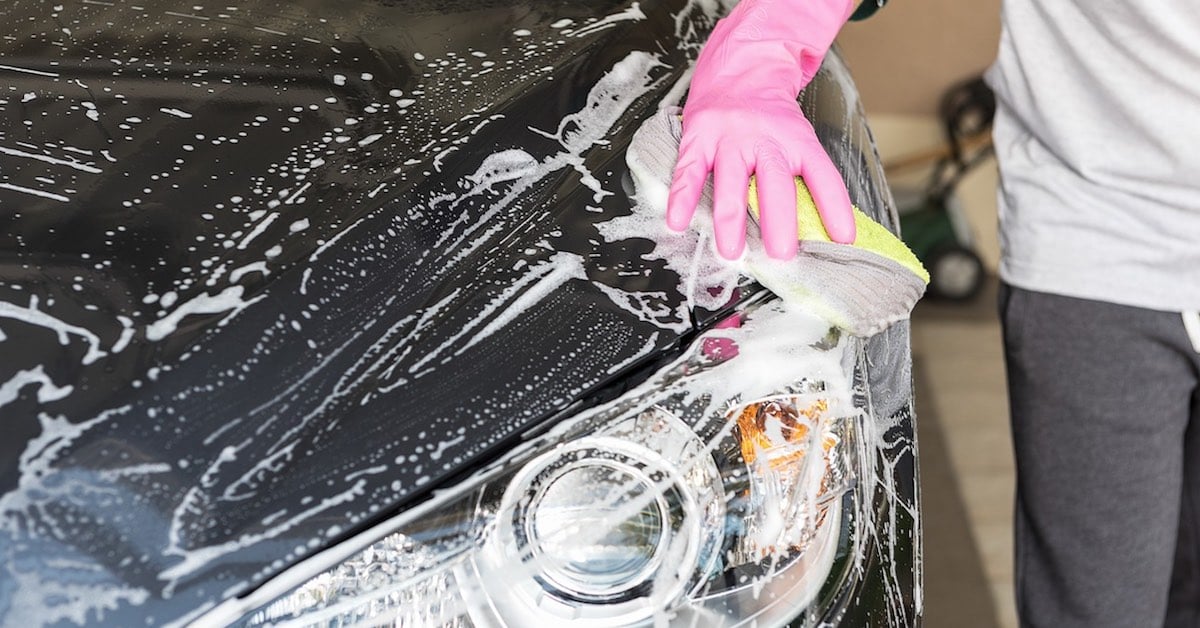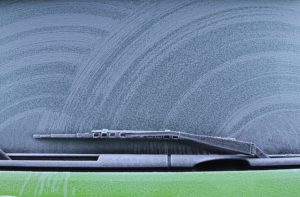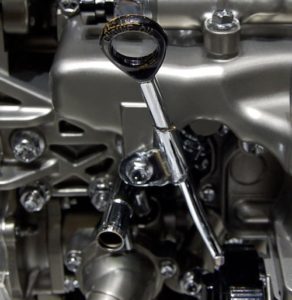No products in the cart.
Car Tips
Do-It-Yourself Car Maintenance: 7 Easy Tips to Keep Your Car in Top Shape
Today’s vehicles are more advanced than ever before, but you don’t need to be a mechanic or have fancy tools to take care of them.

Simple car maintenance tasks can easily be done in your own driveway or garage. Let’s explore the benefits of following these car care tips:
– Your vehicles will operate safer
– Well-maintained vehicles have longer lifespans
– You’ll reduce your carbon footprint
– The satisfaction of performing your own maintenance
– You’ll save money on repair costs
– Your vehicles will look better
Now, let’s dive into some simple car care tips that will protect your investments:
Inspect your battery
Your vehicle won’t go anywhere if the battery fails. Take a moment to visually inspect and occasionally clean this vital car component.
Once a year, check your battery terminals for dry white battery acid. Remove the cables (negative first) and use a wire brush and corrosion removal fluid to clean the terminals. A mixture of baking soda and water can also do the trick. Rinse and dry the area before reconnecting the cables (positive first).
Approximate time needed: 15-20 minutes
Change your windshield wiper blades
Having a clear windshield is crucial for safe driving. If your wiper blades skip, leave streaks, or don’t effectively remove rain and snow, it’s time for a replacement. Squeaking noises are another sign that new blades are needed.
Even if your wiper blades seem fine, inspect the rubber strips for any cracking. Wipe them occasionally with a damp rag or paper towel to remove debris.

Just like the other car care tips mentioned, factors such as weather conditions and how often you use your vehicle will impact when you should replace certain car parts.
It’s generally advised to change your wiper blades every 6-12 months. To be prepared, consider buying an extra pair and keeping them in your trunk.
For most vehicles, changing the windshield wiper blades is a simple task that you can do yourself. Just follow the instructions in your owner’s manual or on the packaging.
Approximate time needed: 10-15 minutes.
3. Change the engine air filter
Out of all the car care tips, changing your engine air filter may seem the most daunting. But fear not, it’s actually quite easy.
A dirty air filter limits the amount of air your engine takes in, which can strain the engine and affect acceleration and gas mileage.
The frequency of changing the air filter depends on various factors. If you often drive on unpaved roads or in heavy traffic, the filter may clog faster.
Different car manufacturers have different maintenance schedules for air filter changes. Some recommend every 15,000 miles, while others suggest every 45,000 miles.
Refer to your vehicle’s owner’s manual to determine the schedule and locate the air filter box. In most cases, accessing the air filter box is simple and may not require tools.
A quick visual inspection will tell you if the air filter needs to be changed. If it appears gray or black, it’s dirty.
Approximate time needed: 5-10 minutes.
4. Wash your vehicle
One of the easiest car care tips is to regularly wash your vehicle. This simple task protects the exterior and keeps it looking new.
However, it’s important to strike the right balance. Some people wash their vehicle too infrequently, while others wash it excessively.

The frequency of washing depends on factors such as where you park, how often you drive, and the weather conditions.
In general, washing your vehicle every 2-4 weeks is a good rule of thumb. If you live in an area that uses road salt, consider washing it weekly to prevent salt from damaging the finish and underside.
Parking in a garage is always recommended as it provides protection against things like bird droppings, tree sap, dead bugs, dust, dirt, and pollen.
Approximate time needed: 20-30 minutes.
5. Wax your vehicle
If preserving the appearance of your vehicle is a priority, add waxing to your car care routine after regular washes.
Waxing your vehicle doesn’t have to be a frequent task. It is generally recommended to do it only two or three times per year. Some synthetic waxes claim that their product only needs to be used once a year.
Waxing doesn’t just make your vehicle look shiny, it also protects the clear coat and paint from harmful elements.
An easy way to determine if your vehicle needs a wax is to pour a little water on it. If the water beads up, then waxing is not needed.
Taking care of your vehicle’s exterior can even improve your mileage. Tests have shown that clean cars are more fuel-efficient than dirty ones.
Approximately 50-60 minutes is needed for waxing.
Check your engine fluids regularly, even if your dashboard indicates low levels. It’s a good idea to check them between visits to the auto garage. This is especially important before going on a long road trip.
Always check your fluid levels on a flat surface and use a clean rag or paper towel to wipe off the dipsticks.

For accurate engine oil readings, consult your vehicle’s owner’s manual or ask your mechanic for advice. Some experts say to check the dipstick when the vehicle is hot, while others suggest checking it when the vehicle is cold.
Not all vehicles have a transmission fluid dipstick. If yours does, check the level with the vehicle running. The coolant tank should be checked with the vehicle turned off.
Check the brake fluid reservoir and the power steering fluid reservoir, if applicable.
Don’t forget to check the windshield washer fluid level.
Approximately 10 minutes is needed for checking fluid levels.
Although many modern vehicles have a tire pressure monitoring system, it is still a good idea to manually check your tire pressure. A tire pressure gauge and portable tire inflator/mini air compressor are essential tools for any driver.
Driving on underinflated tires can have negative consequences.
- Driving with underinflated tires can decrease your fuel efficiency.
- Running on underinflated tires can lead to tire damage and potential blowouts from overheating.
- Underinflated tires can compromise your car’s handling capabilities.
On the other hand, overinflating your tires can also cause issues. It’s important to fill your tires to the recommended pressure specified by the vehicle manufacturer, rather than relying on the psi level indicated on the tires themselves.
Estimated time required: 2 minutes
Create more space in your garage for parking
Follow these car maintenance tips that involve visual inspections and light maintenance to ensure your vehicles run smoothly.
One simple way to take care of your vehicles is by parking them safely in your garage. This provides protection from the elements and enhances their overall safety. Garage Living can help you transform your garage into a clutter-free and visually pleasing space.
And if you have advanced car maintenance skills, we have solutions for you too. Our garage cabinet systems are perfect for a well-equipped garage workshop. Additionally, our car lifts are not only great for vehicle maintenance tasks but also an excellent way to expand your garage parking options.
Contact us for a complimentary design consultation to plan your garage transformation.
See also:
